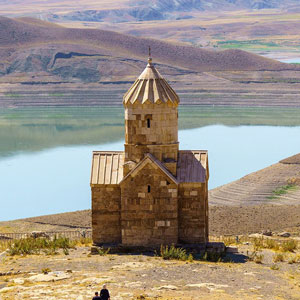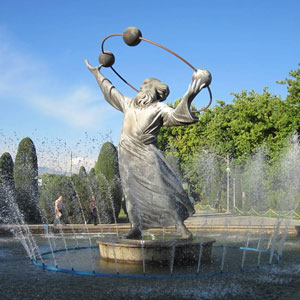 Signin with Google
Signin with Google Signin with Facebook
Signin with Facebook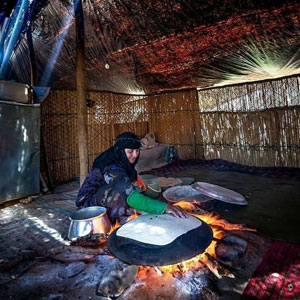
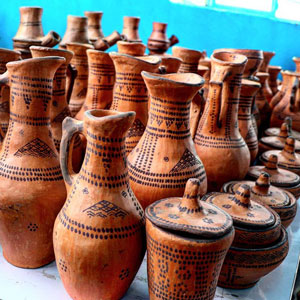
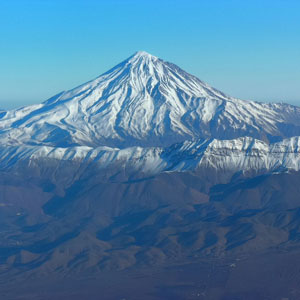
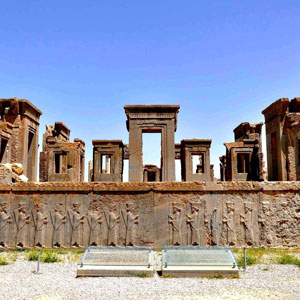 Activities,Culture,Nature,History
Activities,Culture,Nature,HistoryNowruz, the Persian New Year and Symbol of Renewal
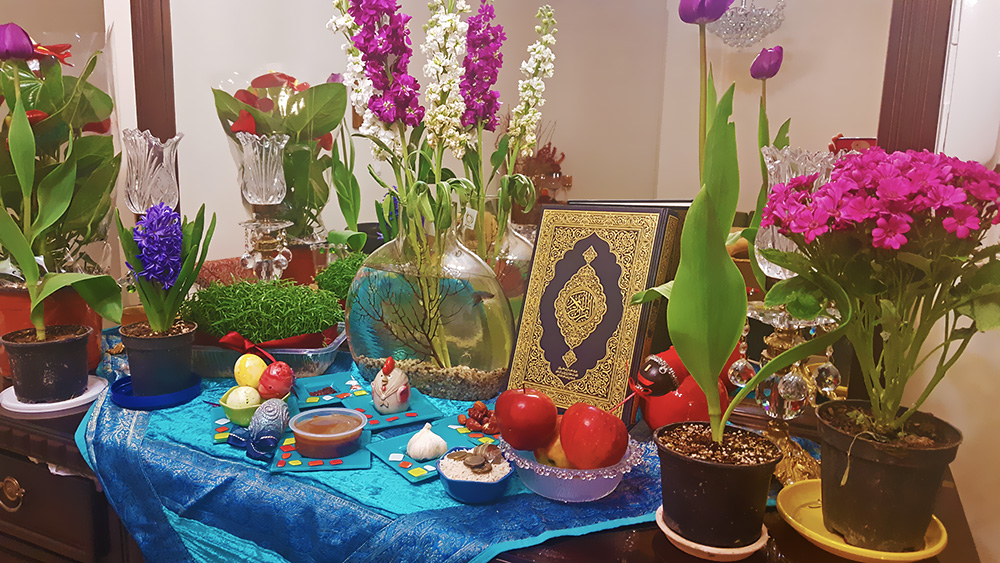
The legend of New Day
Before arrogance conquered the dearest character of ancient time and divine favour flew away from his shoulder, it had been 300 consecutive years the world was like an adorned bride and there were no sign of drought or starvation, no one ever heard of pain or death. Jam commanded demons to build him a throne and then demons carried the king on his marvellous throne from mount Damavand to Babylon within one day.
People thought there are two suns in the sky at the same time and since then the word "Shid" which means radiant has been added to the name of the king and his name became Jamshid. It was the beginning of the spring when he sat on the throne and that was when a new day started and has been called Nowruz (New day) since.
Nowruz, the Persian New Year and symbol of renewal
As winter leaves its white coat behind it, days are slowly getting longer, the air caresses the cheeks with a soft warmness, and green leaves dares to venture out of the soil. These are the signs that spring is coming, and with it, a whole new life is about to start. Here is the spirit of Nowruz, the Persian New Year and most beloved celebration in Iran.
"Nowruz" comes from the Avestan language and literally means "New Day", and this is what this celebration is about. Following the example of Mother Nature, people are invited to close the door on one chapter and turn the page to start a fresh new one. Regardless of the religions, beliefs, ethnicities, Nowruz offers to all the occasions for a change, a renewal.
Worldwide celebration
This celebration is at the core of the Persian culture and Iranian identity, as it is connected to the illustrious past of the great Persian Empire and before. Everyone in Iran, whatever are their origins, their faiths, their practices, embraces the same rituals to celebrate Nowruz. Even beyond the frontiers of Iran, Nowruz is celebrated worldwide by millions of people: from the Iranian diaspora to the neighbouring countries of Iraq, India, Afghanistan, Tajikistan, Uzbekistan, Azerbaijan, Kazakhstan, and Kyrgyzstan.
Even the United Nations has recognized these holidays in 2010 and the former American President Barack Obama used to address public wishes for the Persian New Year. It showed that despite tensions, Nowruz's spirit is about being united and moving forward in the right direction.
This is why people believe that whatever a person does on the day of Nowruz will affect the rest of the year, and are thus encouraged to spread kindness and love.
Zoroastrians roots
No one knows exactly how far Nowruz dates back, however Avesta, the holy book of Zoroastrianism, which was born in Persia way before the advent of Islam did not mention about Nowruz and its rituals yet since the Achaemenian stone-reliefs show people of this era were well familiar to Nowruz, it may have roots in one of the world's oldest monotheist religions.
This religion, embraced by the most glorious Persian Kings, worships nature, viewed as the most pristine creation of God. From the Achaemenid times, the Kings of Persia have celebrated the advent of spring and the renewal of nature. It is even believed that the main purpose of the Palace of Apadana, in Persepolis, was to hold Nowruz's celebrations.
Since time immemorial though, it's not kings but nature itself thay has set the pace of the entrance in the New Year: Nowruz takes place at the exact moment of the vernal equinox when the sun crosses the celestial equator from South to North. In 2020, it is then due for the 20th of March, at exactly 7:19 AM in local time and 3:50 UTC.
Nowruz Rituals
Of course, Iranian families start to get ready for the celebrations way before the D-Day. It's a joyful holidays time, comparable to Christmas and end-of-the-year celebrations in Western countries. About three weeks earlier, it is time to undertake a wide spring-cleaning: Not only for the sake of emptying one's closet but truly to get rid of all unnecessary things in the house and cleaning everything in the house from top to bottom. This ritual is called "Khane Tekani". Symbolically, it allows households to cleanse away the past.
With Nowruz approaching, Iranians start to get ready several weeks in advance by shopping for everything they need to welcome their guests and prepare their house. Shops and markets get quickly crowded as people are looking for sweets, nuts and other delicacies. They also buy flowers to embellish their houses, hyacinth in particular, as it symbolizes prosperity and happiness. Contrary to Christmas, there is no custom of offering each other gifts, however, there is a tradition of buying and wearing new clothes on the New Year, following the idea of renewal.
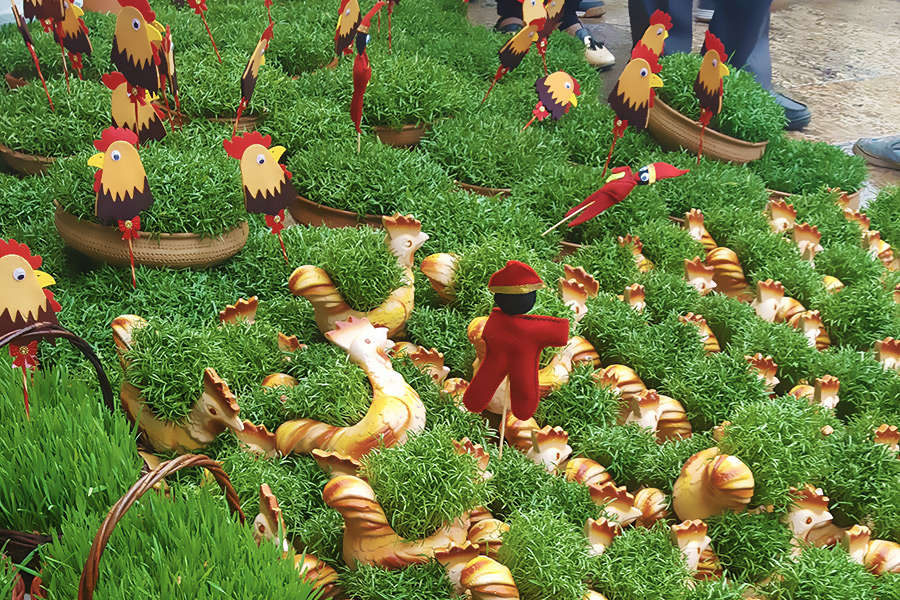
The Haft-Sin Table
Each house also prepares its own "Haft Sin Table", one of the brightest symbols of Nowruz, an equivalent of the Christmas Tree and Nativity Scene for Christians. It consists of a table with seven ("haft" in Farsi) items whose names start with the letter "S" ("sin"), all of them carrying specific meanings in order to fulfil the wish of a happy New Year.

Usually, the Haft-Sin Table includes the following pieces: Grass ("Sabze", in Farsi), as a symbol of nature. An apple ("Sib") refers to good health. Garlic ("Sir") and "Sumac" (a spice), which both symbolize stimulation for life. "Senjed", a kind of dried olive, here to bring wisdom. "Samanu", a traditional sweet paste typical from Nowruz, expresses power and bravery. Finally, vinegar ("Serkeh"), which symbolizes the disinfection, to get rid of the bad remaining of the ending year.
Family at the centre
Nowruz's celebrations last for 13 days, which centre on family and relatives. Thus, the main tradition consists of paying visits to family members: The youngers are expected to visit the elders first, and the elders will return their visit later. Of course, those visits must be relatively short, in order to be able to see everyone, and are necessarily accompanied with a lot of "shirini" (sweets) different types of nuts and specific foods cooked for the occasion.
Let nature drives away bad luck
At the end of these delightful 13 days of sharing food, gifts, and joyful moments with family members come the Nowruz's last celebration and zenith: Sizdah Bedar, Nature's Day.
On this day, Iranians hold large picnics outdoors, enjoying spring and nature at its best. It is the moment to collect the greenery of the Haft-Sin Table and discard them into running water. For three weeks now, the "sabzeh" have taken with them all the household's bad luck and sickness, and they are released into nature to ward off the evil's eye.
Amu Nowruz, the traditional herald
Through times, other rituals have developed in Iran, some of them persisting nowadays, others slowly disappearing. An ancient one reminds of Christmas’ Santa Claus: Amu Nowruz ("Uncle Nowruz") and Haji Firuz are the two traditional heralds of Nowruz. Like its Christian counterpart, the old white-bearded Amu Nowruz appears at spring to bring gifts to children. He symbolizes the rebirth of the Sumerian god of sacrifice, killed at the end of each year to reborn at the following of the New Year.
He is accompanied by Haji Firuz, dressed in red and black faces, because it is being covered by soot. Haji Firuz dances through the streets while singing and playing music, to spread cheerfulness among people and bring the news of a promising happy New Year while he is not as prosperous as he indicates but smiles and dances to bring joy to all people for the new day.

